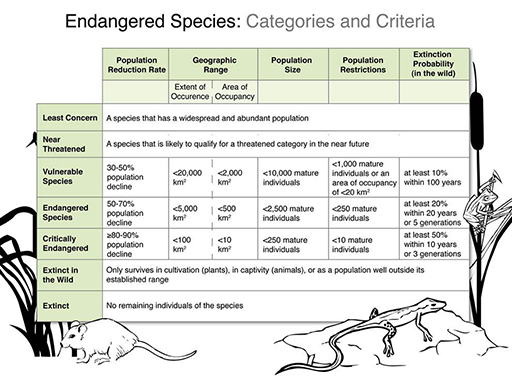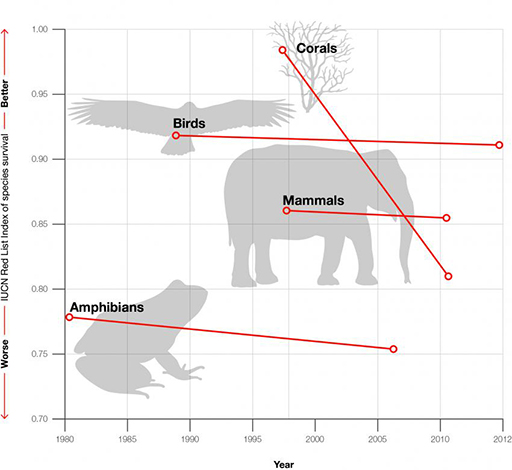7.2 The Red List
The Red List, produced by the International Union for Conservation of Nature (IUCN), gives the global conservation status of organisms. Species at risk are categorised using standard criteria (Figure 22). Applying these criteria gives each species’ Red List status and the list can be used to quantify the biodiversity on the planet.

The IUCN Red List index measures overall trends in extinction risk for groups of species based on observed changes in their Red List status over time. At present, index values have been calculated for only four groups of organism (Figure 23). In order to establish a trend, at least two sets of observations are required, so there is much more work to do.

As you can be see, with just two measures of the Red List index for each of the four groups, a decline in status is apparent for all of them. This is powerful evidence that there is a rapid decline in biodiversity in some major groups. Does this mean we really are heading towards a sixth extinction event?
